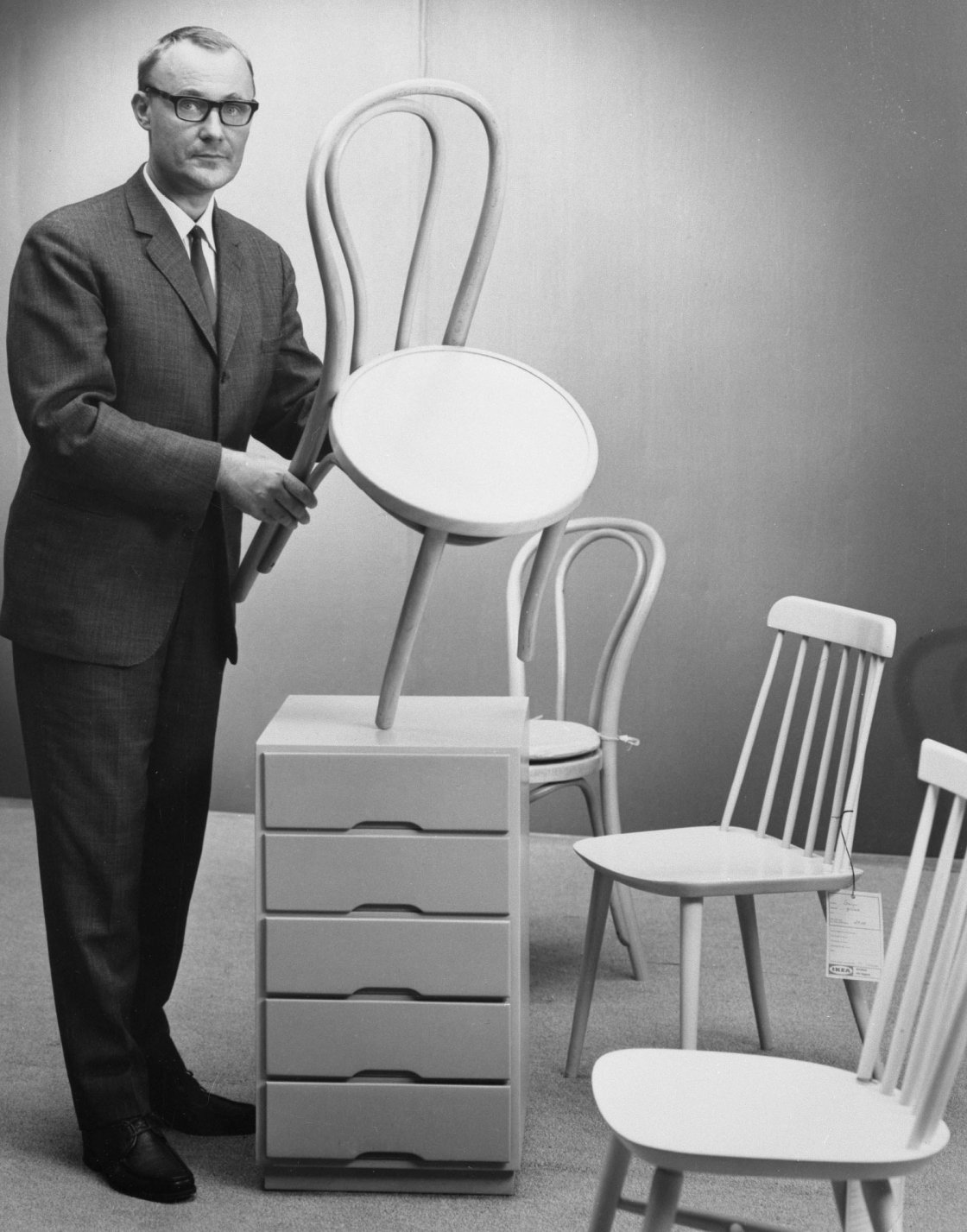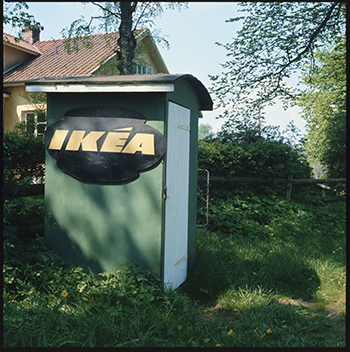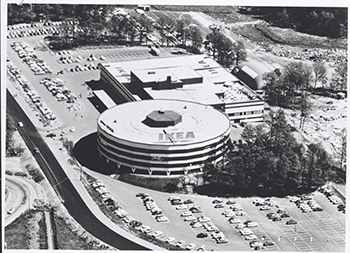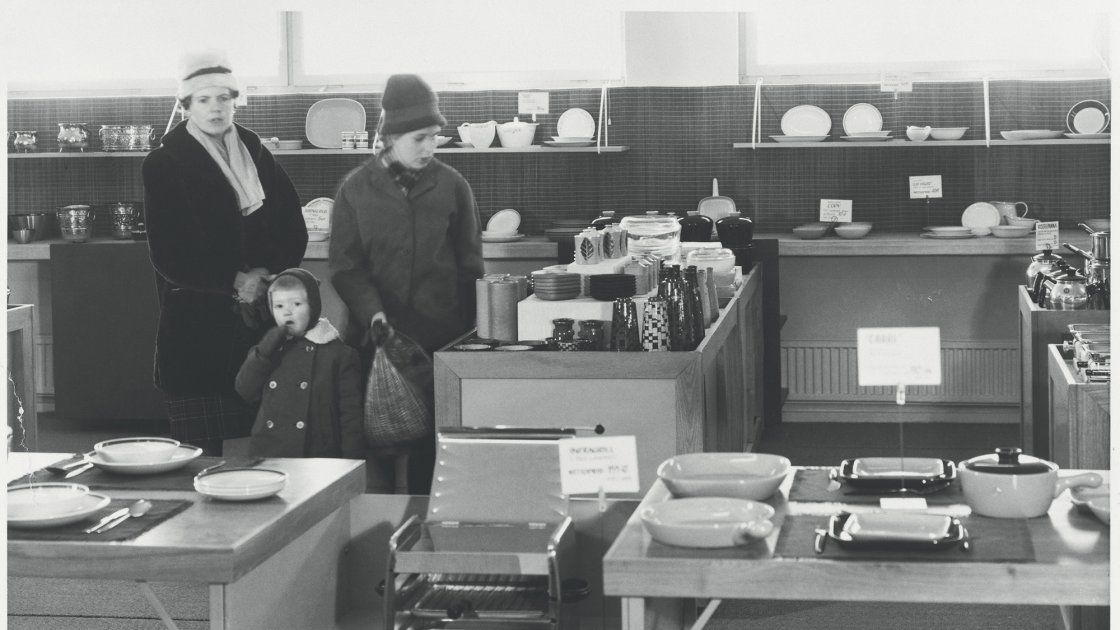El vídeo de arriba es para uso exclusivamente decorativo dentro de está página.
IKEA and the art of home
Design for a better everyday life
From 26 November 2024 to 6 January 2025

IKEA has created a tour around the museum's galleries that takes visitors on a fascinating historical and artistic journey. Through a selection of masterpieces from the permanent collection, culminating in an exhibition space where the Swedish company invites us to discover its past, we are able to reflect on six centuries of stylistic and functional transformation in the homes up to the arrival of Democratic Design, with IKEA as its main proponent, in the 20th century.
This is an opportunity to understand how domestic spaces have evolved. We discover how they have slowly adapted to people's needs, with innovations that have simplified the manufacture, transportation and assembly of furniture — all while striving to achieve ultimate comfort as well as beautiful and functional environments where every element is designed to facilitate and enrich the lives of those who live in them.
The search for versatility, functionality, beauty and comfortin the home over the course of history has given rise to IKEA, a benchmark in the success of Democratic Design. Having begun as a dream and societal aspiration in the late 19th century and the early 20th century, it became a reality thanks to the company founded by Ingvar Kamprad and the 5 key aspects of its production: form, function, quality, sustainability and low price. These five pillars are the result of some of the ideas reflected in the works along our journey, and the exhibition that IKEA has put together in the Rodin Room Room gives us the opportunity to explore them in depth.
Browse this page to see and locate the different elements of the exhibition.
Begin your visit with the IKEA Democratic Design Manifesto, before moving onto the selection of works in the Thyssen-Bornemisza "IKEA and the art of home" collection, and end with the exhibition in the Rodin room that showcases the IKEA journey towards democratic design.

Democratic Design Manifesto
"We want to shake the world up, make it a better place. And we thought we'd start by making everyday life better. More human, more fun, simpler, smarter, and better looking. And we want as many people as possible to be able to experience this great everyday life. [...] Our mission is the almost impossible idea to combine beautiful form with good function, long-lasting quality, produced in a sustainable value chain with a low price. […] We believe it is possible to include all these five dimensions and we call that IKEA Democratic Design".
Extract from the IKEA Democratic Design Manifesto, 1995
Since its very beginnings, IKEA has held a firm belief that design should be accessible to all and, therefore, produced in large quantities and sustainably without compromising on functionality and quality.
This democratic approach was already evident in the ideas that drove Ingvar Kamprad at the beginning of his career, but it was set out in greater detail in the book presented at the 1995 Salone del Mobile in Milan (Milan Furniture Fair), alongside the collection that embodied the spirit of the project: the IKEA PS collection. The company's proposals reflected its desire to return to its roots and reproduce the aesthetics and quality of Scandinavian simplicity at a price affordable to the many people. Just as the Bauhaus and De Stijl movements expressed their missions through manifestos, IKEA has its own statement of intent that sets out the key aspects of its offering.

IKEA and the art of home
We have put together a path that takes in 16 paintings that will transport you to domestic spaces from centuries past. The rooms, objects and furniture depicted in these painted interiors invite us to consider the most intimate everyday environments inhabited by those who came before us. In many cases, these scenes are our only way of knowing how certain things looked, which, due to their age or fragility, have not survived to the present day.

Exhibition
Continue with the display in the Rodin Room (exhibition space on the first floor, next to room 30), and see the path to democratic design.
The journey through constant social, economic and cultural change reflected in the selected works from the museum ends with the pieces chosen to illustrate the innovative ideas that arrived at the turn of the 20th century with an ambition to democratise design. This is the gallery where we find the most enlightening pieces when it comes to explaining the emergence of IKEA as one of the logical conclusions in response to the needs expressed in avant-gardism.
Inspired by the rationalist, free and modern spirit of the Bauhaus, which focused its efforts on constructing the world of tomorrow, and by the aesthetic-yet-functional solutions of Scandinavian design, IKEA started selling furniture at the end of the 1940s with the aim of combining affordable prices with style and high quality. Up to that point, businesses had placed all of their focus on optimising manufacturing processes, and in so doing overlooked a crucial issue: the increased product prices charged by middlemen, which had created a gap between manufacturers and consumers.
With his innovations in purchasing, financing and distribution, one man tore up the rulebook and led the change: Ingvar Kamprad, the founder of IKEA.

Ingvar Kamprad
See the ingenuity of a young man from Älmhult

Ingvar Kamprad was just 17 years old when he registered IKEAas a company in 1943. At that time, his small business was still a long way from becoming the furniture goliath that we know today. During the young Kamprad's first few years in business, he imported a variety of items such as pens, watches and leather cases as he learnt about purchasing processes detail by detail. It was at the end of that decade that he decided to make furniture his focus. He named his project using his own initials, along with those of the farm where he lived and the town where he was from, and thus Ingvar Kamprad Elmtaryd Agunnaryd –IKEA – was born.
When our protagonist made his first foray into trying to sell furniture, he did so in relatively favourable circumstances. In aim of tackling the economic crisis that was impacting all of Europe, the Swedish government had rolled out a support programme offering competitive loans to people wishing to set up home. It was a time when there was hope for the future, when people and their well-being were seen as important. Demand for furniture was on the rise, and people once again had a certain level of financial means.
Against this backdrop, Kamprad revolutionised the decor industry with ideas such as mail-order purchasing and showrooms where customers could test the quality of products before ordering them. Ingvar, who had long lambasted the role of middlemen raising the prices of furniture, identified alternatives that offered clear benefits for customers. He wanted to do something positive for the people that he had grown up with, who he knew and whose daily lives he had witnessed during his childhood: hard-working people who were careful with their money and sparing with their trust.
The traditional furniture industry felt threatened by the success of the initiative of the rebel from Älmhult. A price war kicked off and there were several boycotts, and his competitors used every trick in the book to stop him. Ingvar Kamprad was barred from entering various trade fairs, but he always found an ingenious way to get around the issue. The story goes that, to get into the 1954 Gothenburg Furniture Fair undetected, he hid beneath a Wilton rug in the boot of a car.
Many years on from those turbulent beginnings, and conscious of what he had achieved, Kamprad published a text entitled The Testament of a Furniture Dealer (1976). The document summarised the ideas that formed the foundation of the IKEA brand. In it, Ingvar formulated the overriding social ambition, the IKEA vision, as "To create a better everyday life for the many people". And that vision became a reality when he achieved his main objective: "offering a wide range of well-designed, functional home furnishing products at affordable prices for the many people".
IKEA through time
Explore the milestones achieved by Ingvar and IKEA with a selection of images and this timeline
INGVAR AND IKEA
1926

On 30 March Ingvar Kamprad was born in Pjätteryd.
As a boy, he shows an early interest in sales.
1943
IKEA is registered as a company on 28 July.

1948
He embarks on his postal sales journey.
1951
The first catalogue dedicated exclusively to furniture is published.

1956
The flat pack and "build-it-yourself" furniture concepts are introduced.
1958
The first store is opened in Älmhult.

1960
The first in-store restaurant is opened.
1963
The first IKEA store outside of Sweden is opened, in Norway.

1995
The concept of IKEA Democratic Design is born.
2018
Ingvar Kamprad passes away in Småland.

2021
The last printed IKEA catalogue is published.
2024
IKEA has 473 stores in 63 different countries stores in 63 different countries.











